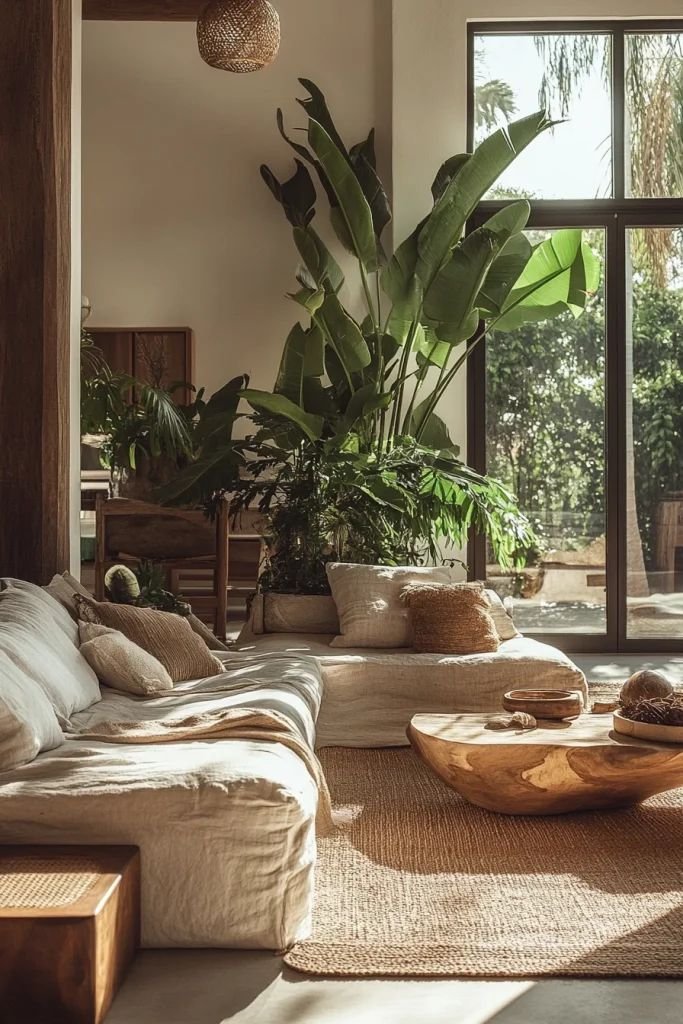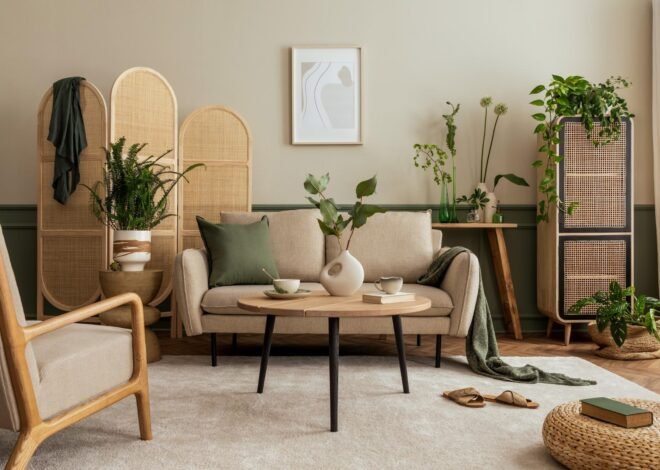
Top 7 Home Decor Trends for 2025: From Grandmacore to Biophilic Style
Home decor in 2025 embraces both nostalgia and innovation, creating spaces that reflect personal history while incorporating cutting-edge functionality. These seven trends define the year’s most influential interior movements, each offering distinct approaches to residential design.
1. Grandmacore Revival
Grandmacore transforms vintage elements into contemporary statements through curated collections of inherited and sourced pieces. Patterned wallpaper featuring botanical or geometric designs covers accent walls, while needlepoint pillows and crocheted throws add tactile warmth to seating areas. Glass-front cabinets display cherished dishware and collectibles, creating personalized vignettes that tell family stories. This trend repurposes traditional furniture with modern updates, such as reupholstering antique chairs in performance fabrics that maintain vintage aesthetics with contemporary durability.
2. Biophilic Integration
Biophilic design moves beyond houseplants to create holistic connections between indoor spaces and natural environments. Living walls with integrated irrigation systems serve as artistic focal points while improving air quality and acoustics. Natural materials like reclaimed wood, stone, and rattan form structural elements and furniture pieces, bringing organic textures throughout interiors. Large-format windows and skylights maximize natural light, while circadian lighting systems mimic daylight patterns to support wellbeing. Water features, from small fountains to indoor ponds, introduce soothing sounds and movement that reduce stress and enhance concentration.
3. Sustainable Material Innovation
Eco-conscious decor now incorporates advanced sustainable materials without compromising aesthetics. Mycelium-based furniture and decor items offer lightweight alternatives to traditional materials with minimal environmental impact. Recycled glass countertops and tiles provide unique visual interest while diverting waste from landfills. Textiles made from agricultural byproducts like pineapple leaves and orange peels create luxurious upholstery and drapery with reduced resource consumption. These materials often feature certifications verifying their environmental credentials, allowing consumers to make informed choices about their decor investments.
4. Tech-Integrated Spaces
Smart home technology seamlessly blends into decor through discreet yet functional design elements. Invisible speakers embedded in walls and ceilings deliver high-quality audio without visible equipment. Motorized window treatments adjust automatically based on sunlight, temperature, and occupancy, optimizing comfort and energy efficiency. Interactive surfaces like smart mirrors and countertops display information, control home systems, and facilitate communication while maintaining their primary functions. Voice-activated ambient lighting systems create customizable atmospheres for different activities, from focused work to relaxation.
5. Maximalist Expression
Maximalism returns with curated collections that reflect personal passions and experiences. Bold wallpaper patterns cover entire rooms, creating immersive environments that stimulate visual interest. Layered textiles in complementary colors and varied textures add depth and comfort to seating areas and beds. Gallery walls display diverse artwork, photographs, and objects in thoughtful arrangements that evolve over time. This trend embraces pattern mixing, combining florals, geometrics, and abstract designs in harmonious color palettes that create dynamic yet cohesive spaces.
6. Earth-Toned Minimalism
Minimalism evolves with warm, earthy color palettes that create serene yet inviting environments. Terracotta, sage green, warm beige, and soft ochre replace stark whites and cool grays as foundational colors. Natural finishes on furniture and architectural elements highlight material authenticity and craftsmanship. Thoughtful space planning eliminates unnecessary items while maintaining comfort and functionality through multi-purpose furniture pieces. Textural contrast between smooth surfaces and rough-hewn elements adds visual interest without introducing additional colors or objects.
7. Multifunctional Design Solutions
Flexible living spaces adapt to changing needs through innovative furniture and room configurations. Transformable pieces like Murphy beds with integrated desks and storage maximize utility in smaller spaces. Modular furniture systems reconfigure easily for different activities, from entertaining to focused work. Sliding partitions and pocket doors create private areas when needed while maintaining open-plan flexibility. Built-in furniture with hidden storage compartments reduces visual clutter while maximizing functionality, particularly in urban environments where space optimization remains essential.
These trends reflect broader cultural shifts toward personalization, sustainability, and technological integration in home environments. The most successful 2025 interiors blend elements from multiple trends, creating spaces that balance individual expression with practical functionality. Design professionals report that 73% of homeowners now prioritize decor that supports both aesthetic preferences and lifestyle needs, moving away from purely style-driven decisions toward more holistic approaches to residential design.


